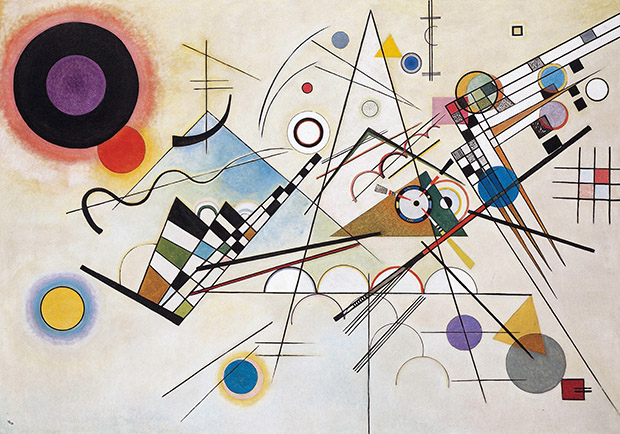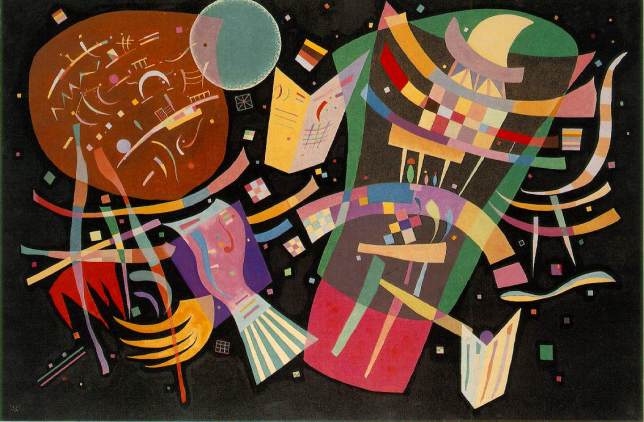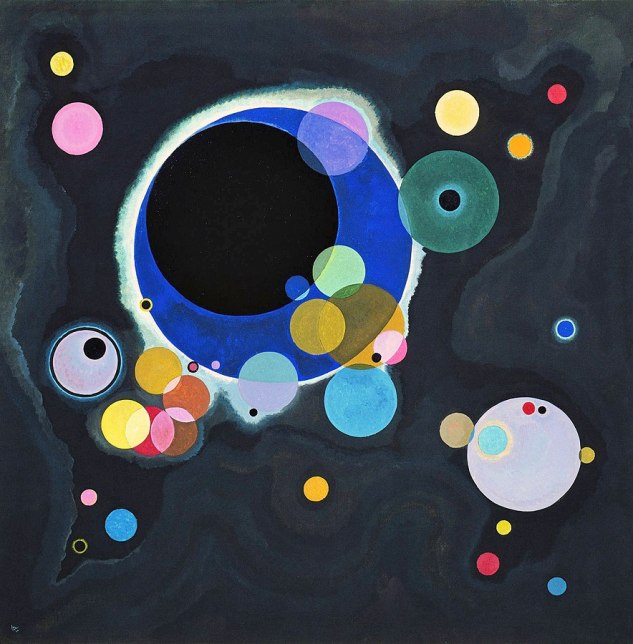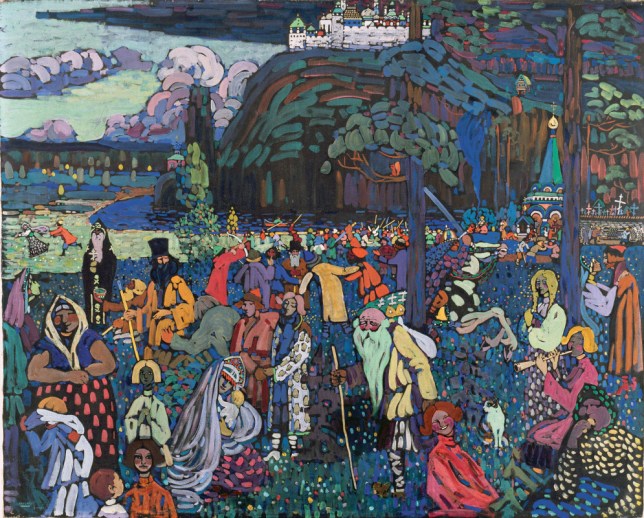
10 Things to Know About... Kandinsky
Born in Moscow, Russia in 1866, Vassily Kandinsky spent his life exploring art, pushing traditional boundaries. A visionary and perfectionist, his extraordinary curiosity led him to develop a new art form that was non-figurative and abstract. Want to learn more about this incredible character? Discover 10 must-know facts about Vassily Kandinsky!
1. Monet inspired Kandinsky to become a painter
It was through Impressionism, and in particular the paintings of Monet, that Kandinsky discovered his love for painting. He recounts having experienced a sublime feeling in response to one of Monet’s paintings in the Haystacks series. This experience changed Kandinsky’s life forever; he decided then to devote his life to painting.

2. Vassily Kandinsky is the father of abstract art
Ingenious, creative and madly passionate, Vassily Kandinsky is often considered the inventor of abstract art. However, some experts suspect him of having backdated his “abstract watercolor” in order to ensure his authorship of abstract art. If no proof confirms or denies this statement, one thing is sure, Kandinsky has left an indelible mark on the history of art.

3. Kandinsky was a synesthete
It is not by chance that Kandinsky is often compared to a musician. We are now almost certain that he was a synesthete. This means that the brain associates different sensations that are usually not related to each other. Simply put, it’s when one sense is perceived as another. In Kandinsky’s case, the overlap was between colors and music. He could hear the colors and he could see the music. Experts even believe that the artist associated yellow with the trumpet, red with the violin and blue with the organ. A symphony that he spent his life trying to convey to others.

4. He composed Impression III as a tribute to a Quartet by Arnold Schönberg
In January 1911, Kandinsky discovered the music of Arnold Schönberg during his concert in Munich. Particularly touched by the Second-String Quartet, he created the painting Impression III as a tribute to this composition.

5. He was an extreme idealist
With an insatiable artistic curiosity, Kandinsky worked relentlessly and stubbornly to find absolute balance. To achieve this, he was always experimenting with new materials and processes. For example, he prepared his own colors and backgrounds, sometimes using scrambled eggshells.

6. Paul Klee had a strong influence on Kandinsky’s work
Vassily Kandinsky and Paul Klee were close friends. Beyond his permanent emotional support, Klee had an important influence on Kandinsky’s work. Indeed, he convinced him to detach himself from the motif to concentrate totally on imagination and memory. A new approach that will mark the entire career of the painter.

7. Vassily Kandinsky was fascinated by the impalpable
Attracted by the spiritual and mystical, Kandinsky practiced several orthodox rites and was interested in the occult sciences. He was fascinated by that we cannot touch, but which we can feel. This is one of the reasons why he was so detached from reality and the objective. This is evidenced by one of his famous questions: “What should replace the object?”

8. Vassily Kandinsky co-founded “The Blue Rider”
Kandinsky firmly believed in a new form of art, plural, decompartmentalized and unifying. This is why he founded “The Blue Rider” with Franz Marc, a large-scale artistic initiative. The goal was to promote all types of contemporary creation, by breaking down the barriers between the arts. Music, plastic arts and theater thus merged to open the field of the possibility.

9. Kandinsky used the “additive mixture of colors”
For reasons that were at the same time symbolic, artistic and aesthetic, Kandinsky granted a particular importance to color. To the point of working with a specific technique called the “additive mixture of colors”. Like light sources, this process, instead of darkening them, brightens the colors when they are superimposed.

10. For him, art was the only way to speak to the soul
In his essay On the Spiritual in Art, Kandinsky explains the three genres he explored in his work as a painter. He reveals the essence of his love for art as the only way to approach spirituality: “Art is the only language that the soul can hear.”

Vassily Kandinsky, a before and after
Kandinsky is one of those artists who can easily be said to have changed the history of art. If these facts about Kandinsky’s artwork give testimony to this, they are just droplets in the vast ocean of his influence in the world! And for you, what is your favorite work by Kandinsky?

About Artsper
Founded in 2013, Artsper is an online marketplace for contemporary art. Partnering with 1,800 professional art galleries around the world, it makes discovering and acquiring art accessible to all.
Learn more













